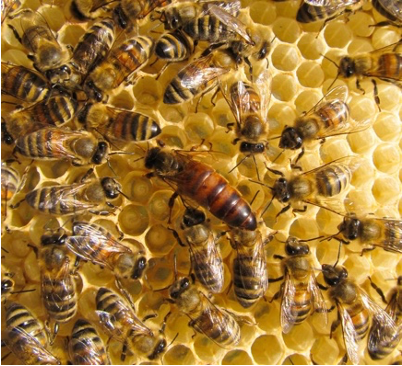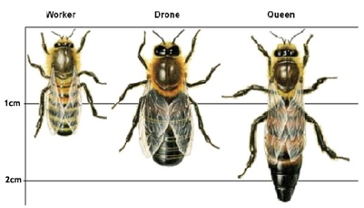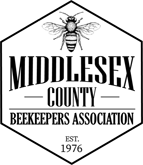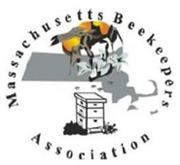
Honeybees are crucial pollinators in urban, natural and agricultural landscapes. Together they pollinate about 130 different types of fruit, vegetables, nut and fiber crops as well as ornamental crops. They not only improve crop yield but allow for almost $15 billion dollars of profit worldwide in these particular areas.
Hundreds of millions more are generated through the related sales of beekeeping equipment and supplies, and the sale of hive products such as pollen, wax, honey, royal jelly, venom for medical purpose. A recent study in Australia regarding bee venom found significant results in the use of bee venom in targeting and destroying breast cancer cells, while not harming normal cells in the same area.
It is widely estimated that 1 in every 3 bites of food we eat is the result of insect pollination activities around the world. Of this pollination activity, honeybees (as opposed to the thousands of other pollinators such as butterflies, bumblebees, wasps, and other insects) represent over half of all this activity. Thus, we all can benefit from protecting and caring for these amazing creatures!
Apis Mellifera Linnaeus
Bees are the only insects which produce food humans can eat
Bees are the only insects which produce food humans can eat. The most common of the honeybees is one that is found within Europe and Africa known as the Apis Mellifera Linnaeus honeybee. This type of honeybee is so popular and so good at making honey that it is now distributed worldwide. It was first introduced to other countries like America as early as the 1600’s by English and Spanish settlers and became even more popular from 1859 to the early 1900’s when beekeepers began to actively import this type of honeybee.
Honeybees live in colonies that consist of a single honeybee queen who is usually the mother of the other colony members. There are about 10,000 to 60,000 semi-sterile female workers and up to a few thousand males, also known as drones in a honeybee colony. The adult workers perform all of the different behavioral tasks associated with keeping the colony from dying out. The worker honeybees perform the many working tasks to make the honey and care for the colony. Roles beyond honey making include those of the water bees, nurse bees, undertaker bees, housecleaning bees, guard bees, and more.
When the honeybees come out of their cells as young adults, they start to clean the cells and as they age, they are able to feed the larvae, process and store food, secrete wax, construct the combs, and guard the entrance to keep out predators. As early as three weeks old, they start foraging for nectar and continue to do this until they die.
Some honeybees will forage for up to 5 miles looking for flowering plant and their pollen. In searching from flower to flower, they naturally pick up pollen and pass it along to other plants, thus creating a perfect distribution system for the pollen.

A beehive can hold up to 60,000+ bees
The life expectancy of a honeybee differs along with many factors such as the social structure of the colony, the environment in which they forage, and what type of year it is, to name a few things.
Some interesting information about honeybees includes the fact that they have five eyes. They fly about 20 mph and have six legs because they are technically considered to be insects. It is also true that when a bee loses its stinger, it will cause the bee to die.
Honeybees have been around over 30 million years according to some ancient documents. A typical beehive can hold up to 50,000 – 60,000 bees at one time, and the honeybees within one hive must collect nectar from about 2 million flowers to make only one pound of honey.
In fact, the average forager only makes about 1/12th of a teaspoon of honey in their entire lifetime, which is why we need so many bees in our world.
Honeybees have relatively short lives. In warm weather, they are especially busy with all their various tasks, which take a toll on longevity. As such, most honeybees live between 6-8 weeks. In the winter, when activities are reduced, that timespan may increase to 8-12 weeks.
Obviously, for all these reasons, and many more, honeybees are essential to have around and bring us so much of the wonderful things in the world such as flowers, honey, and a wide range of crops.

Honeybees, like ants, termites and some wasps, are social insects. Unlike ants and wasps, bees are vegetarians; their protein comes from pollen and their carbohydrate comes from honey which they make from nectar. Social insects live together in groups, cooperate in foraging tasks and the care of young, and have different types, or “castes,” of individuals. There are three castes of honeybees.
Workers– Reproductively underdeveloped females that do all the work of the colony. A colony may have 2,000 to 60,000 workers, all busily engaged in the care and keeping of the colony and creating prodigious amounts of honey for the survival of the colony. Workers represent over 90% of the hive population and represent the “backbone” and worker base of the hive. They tend to live less than 2 months, in general.
Queen – A fully fertile female is specialized for producing eggs. When a queen dies or is lost, workers select a few young worker larvae and feed them a special food called “royal jelly.” These special larvae develop into queens. Therefore, the only difference between workers and queens is the quality and quantity of the larval diet. There is usually only one queen per colony. The queen also affects the colony by producing chemicals called “pheromones” that regulate the behavior of the other bees. In her roughly 4-year lifetime, a strong queen can generate well over 1,000,000 new bee larvae. That’s a lot of babies!
After completing the mating act, the drone immediately dies and falls to the ground. Typically, virgin queens will mate with anywhere from 10-15 drones, once again providing genetic diversity for the hive and her posterity.
The queen lays all her eggs in hexagonal beeswax cells built by the workers. Developing young honeybees (called “brood”) go through four stages: egg, larva, inactive pupa and the young adult, with each caste having differing development times.
Newly emerged workers begin working almost immediately, starting with cleaning up the cell from which they emerged. As they age, workers take part in the following tasks, most often in this sequence: clean cells, circulate air with their wings, feed larvae, practice flying, receive pollen and nectar from foragers, guard hive entrance, and forage.
Unlike colonies of social wasps and bumble bees, honeybee colonies live year after year. Therefore, most activity in a bee colony is aimed at surviving the next winter.
During winter, bees cluster in a tight ball with the queen generally in the center. Depending on the duration and intensity of the winter, beginning in March and April in northern climates, the queen starts laying eggs in the center of the nest. Because stored honey and pollen are used to feed these larvae, colony stores may fall dangerously low in late winter when brood production has started but plants are not yet producing nectar or pollen. When spring “nectar flows” begin, bee populations grow rapidly.
By May and June, many colonies are crowded with bees, and these congested colonies may split and form new colonies by a process called “swarming.” A crowded colony rears several daughter queens; then the original mother queen flies away from the colony, accompanied by up to 60% of the workers. These bees cluster on some object such as a tree branch, bush, fence post, mailbox, or even the bumper of a car or fire hydrant, while scout bees search for a more permanent nest site – usually a hollow tree or wall void, within the eves of an old barn, or sometimes within the outer walls of a home or other attractive, warm and protected nesting site. Usually within 24 hours, the swarm relocates to the new nest site.
One of the daughter queens left behind inherits the original colony and life goes on for the beehive.













